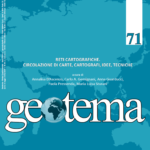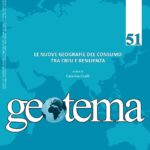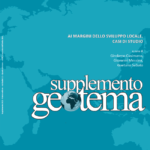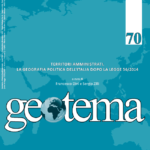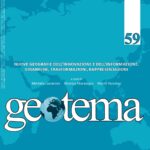Silvino Salgaro
La gestione del rischio: l’apporto della lettura geo-storica
È noto che il rischio, a diversa scala (locale, regionale, statale, planetaria), è parte integrante del geosistema. A mancare è la coscienza della diversità dei pericoli che incombono sulle società e sui territori, della loro differente distribuzione nello spazio terrestre, nonché della gravità delle loro potenziali conseguenze. Lo snodo del problema è costituito dal ruolo rivestito dai comportamenti antropici. Questa presa d’atto porta in primo piano i temi della prevenzione del rischio e della gestione delle crisi. La prevenzione prende in considerazione un evento non ancora accaduto e lavora per ipotesi avendo a disposizione tempi lunghi; la gestione della crisi si attua nell’emergenza, e necessita d’azione in tempi rapidi. Le due metodologie dovrebbero interagire ma, nella realtà, rimangono divergenti. In questo contributo si presentano alcune riflessioni in merito alle ragioni della fragilità territoriale che inevitabilmente ogni evento naturale tende a produrre in termini catastrofici. Una situazione che viene spesso amplificata dalla mancata gestione dello spazio e dall’imponderabilità delle calamità naturali, che nessuno strumento di analisi è in grado di prevedere completamente. Fondamentali potrebbero risultare la riscoperta di studi teorici elaborati nel recente passato e l’apporto fornito dalla cartografia storica.
Abstract: Risk Management: Contribution of the Geo-historical Approach
It is known that risk, at different scales (local, regional, state, planetary), is an integral part of the geosystem. What is lacking, unfortunately, is the awareness of the diversity of the dangers that threaten societies and territories, of their different distribution in terrestrial space, as well as of the severity of their potential consequences. The crux is the role played by anthropogenic behavior. This acknowledgment brings to the fore the issues of risk prevention and crisis management. Prevention takes into consideration an event that has not yet happened and works by hypothesis having a long time available; crisis management is implemented in an emergency, and requires rapid action. The two methodologies should interact but, in reality, they remain divergent. The experience generated by the crisis is elaborated by theoretical studies, but is not assimilated by prevention since, upon their completion, they are often considered to be overtaken by technology and the pursuit of innovation. This contribution presents some reflections on the reasons for the territorial fragility that inevitably every natural event tends to amplify in catastrophic terms. A situation that is often amplified by the lack of space management and the imponderability of natural disasters, which no analysis tool is able to fully predict. The rediscovery of theoretical studies developed in the recent past and the contribution provided by historical cartography could be fundamental.
Résumé: La gestion du risque : l’apport de la lecture géo-historique
On sait que le risque, à différentes échelles (locale, régionale, étatique, planétaire), fait partie intégrante du géo-système. Ce qui fait défaut malheureusement, est la prise de conscience des nombreux dangers qui menacent les sociétés et les territoires, de leur répartition différente dans l’espace terrestre, ainsi que de la gravité de leurs conséquences potentielles. A’l’origine du problème il y a le rôle joué par le comportement anthropique. Cette reconnaissance met en évidence les enjeux de la prévention des risques et de la gestion des crises. La prévention prend en compte un événement qui ne s’est pas encore produit et fonctionne par hypothèse ayant un long temps disponible ; la gestion de crise est mise en oeuvre en cas d’urgence et nécessite d’une action rapide. Les deux méthodologies devraient interagir mais, en réalité, elles restent divergentes. Cette contribution présente quelques réflexions sur les raisons de la fragilité territoriale que tout événement naturel tend inévitablement à produire en termes catastrophiques. Une situation souvent amplifiée par le manque de gestion de l’espace et l’impondérabilité des catastrophes naturelles, qu’aucun outil d’analyse n’est capable de prévoir pleinement. La redécouverte des études théoriques développées dans un passé récent et l’apport de la cartographie historique pourraient être fondamentaux.
Parole chiave: gestione, rischio, cartografia storica, analisi territoriale
Keywords: management, risk, historical cartography, territorial analysis
Mots-clés : gestion, risque, cartographie historique, analyse territoriale



